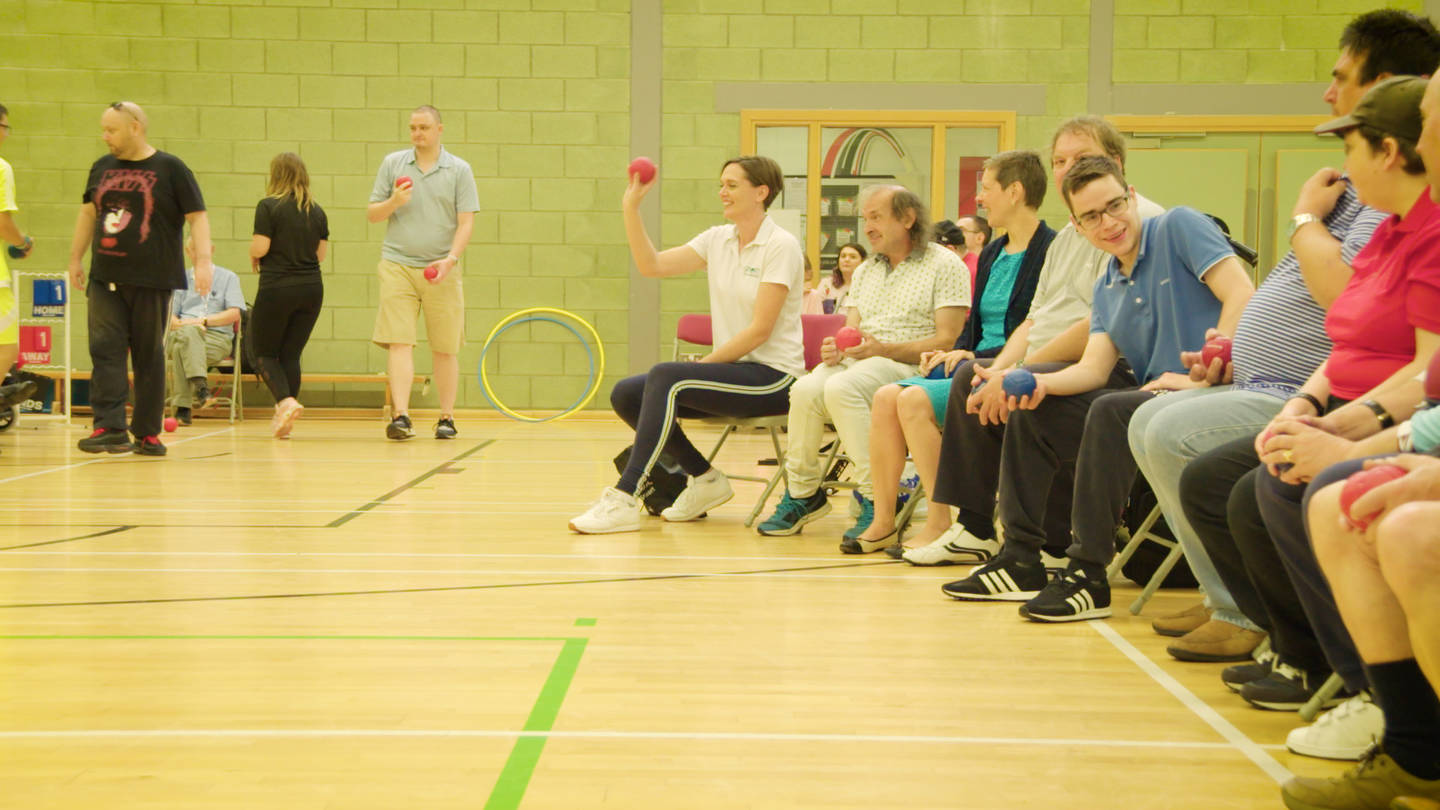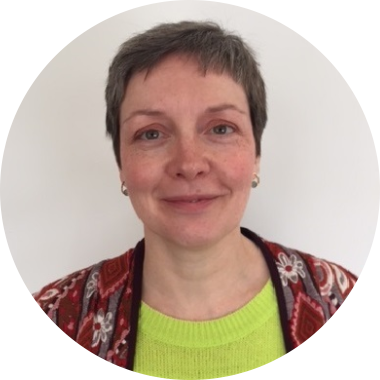Health feature: Genevieve Smyth – RCOT
Last month we released a short film for healthcare professionals on supporting disabled people to be active. The film introduces the urgent case for change so more disabled people can reap physical and mental health benefits of being active. Over the coming months, we are featuring a series of health Q and A articles from key leaders in health, and their calls for action for disabled people. Our latest article comes from Genevieve Smyth, Professional Advisor at the Royal College of Occupational Therapists (RCOT), and one of our film contributors.

 Today, Genevieve talks about physical activity being an effective clinical intervention, and the importance of collaboration in supporting more disabled people to be more active.
Today, Genevieve talks about physical activity being an effective clinical intervention, and the importance of collaboration in supporting more disabled people to be more active.
From a health perspective, what barriers and challenges impact disabled people’s ability to be active?
I actually want to start by stating that taking part in normal everyday activities is a really important part of self-management and a vital tool in enabling people to be independent and have a good quality of life. I was recently part of Activity Alliance's short film for healthcare professionals on how to support disabled people to be active. The video looks at how beneficial activity can be. Occupational therapists have a key role to play by empowering people to manage their own health and wellbeing.
Watch Activity Alliance health video
There is no one answer to your question and there are lots of interdependent factors at play. The first thing I would look at is the physical environment that person is in which is stopping them getting involved in the activity that they want to do. This includes the way people’s homes are designed that make it physically difficult to get out. It also includes problems getting to the place where the activity is being held. For example, sometimes there may not be any public transport or even disabled access to that area – especially if a person lives in a rural location, where transport can be very limited.
I think it’s really important to remember, and this sometimes gets lost that, there is lots of physical activity that people can do which is completely free such as walking or bowls. That said, in today’s society exercise on some level has become socially endorsed with many people feeling social pressure or that the only way to exercise is to go to the gym. Gym fees can be really expensive, so it puts it out of reach for a lot of people. In addition, the physical activity itself is not always graded or adjusted to make it accessible so it’s not pitched in a way that makes it accessible to people with a wide range of different abilities.
Underpinning all of this are the attitudes towards exercise that disabled people face. Some of that is around healthcare professionals not even considering that disabled people want to get involved in sport. Prejudice can crop up when the person accesses an activity and face stigma, discrimination and is treated unfairly in some way. These barriers are societal in nature and hopefully Activity Alliance’s health video helps to address this.
What is the RCOTs’ advice to occupational therapists on working to address these barriers?
As a profession, we need to focus on what we are good at and trained in – that is environmental adaptation and activity analysis. Environmental adaptation includes considering how to adapt people’s physical environment to help people become more physically active. Activity analysis means looking at the chosen activity and assessing with the person how it can be made to be more accessible for them. A great example of this is Allastair - he went on to win a gold in the special Olympic in cycling. You can watch his story below.
https://www.youtube.com/watch?time_continue=2&v=eQSArBI07OkWatch video
I’d also encourage occupational therapists to look to the communities their client lives in and see what’s available there already. Across the UK there are lots of opportunities for people to get involved in physical activity in communities that sometimes occupational therapists are not aware of. Occupational therapists can bridge-build between statutory services and community resources to empower people to manage their own health and wellbeing.
What would your key messages to occupational therapists be who want to embed physical activity into their practice?
Firstly, as I said earlier, be a bridge builder - partner with more leisure centres and sports clubs. This collaboration is vital to ensure that activities they offer are accessible to people. I also think occupational therapists can step up and lead on the education and promotion of physical activity in NHS Trusts; you need an identified lead. This Champion can have the necessary conversations with other healthcare professionals about embracing physical activity.
I also want to stress that occupational therapists need to be a key part of local planning to improve the physical health and activity of local populations. It is about getting the message out that everybody in the community needs to be active - so let’s think about how to make activity accessible for disabled people, let’s think about it for families, young children, and older adults as well.
What do you think needs to change in healthcare to get more disabled people more active?
Healthcare is very good at focusing on people’s problems – looking at what they can’t do and what their difficulties are. There needs to be more focus on what people can do and focus on people’s strengths. Healthcare professionals get really tied up in risk assessments - what could go wrong and the accidents that could happen. We need to understand that people should be enabled to make choices to live their lives. Sometimes physical activity involves a trip but not taking part may be a greater risk.
Every single person in healthcare needs to be talking about physical activity. It’s not just the occupational therapist’s job, or the physiotherapist’s job, or the doctor’s job - everybody should be talking about physical activity and its benefits. We need to do this because becoming more physically active is a clinically effective intervention. It will show measurable results. For example lowering high blood pressure and loss of weight particularly for those who are least active. Last year RCOT launched the Getting My Life Back campaign which looked at improving the physical health of people with serious mental health problems via sport. There are lots of good examples of people’s health improving through doing sport. We have examples for football, gym and indoor climbing, running, boxing and bowls. Find out more about these on the Getting My Life Back website.
How important is the collaboration between the physical activity and health sector in helping to achieve this?
It’s crucial – it can’t happen without this. We need to build on bringing the physical activity and health sector together. I think occupational therapists are really good at using and advocating for a social prescribing approach, which bridges the gap between health and other community assets. Occupational therapists can signpost, guide and link to support services and offer individualised interventions to those with more complex needs. We need to link with social prescribing hubs, leisure centres, sports centres or local gyms that we can collaborate with – the onus of responsibility should be on us – the healthcare professionals to reach out, make contact and then build and develop these partnerships.